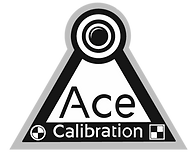top of page
WHAT IS ADAS?
Advanced Driver-Assistance Systems (ADAS) are electronic systems that aid the driver while in the process of driving. They are intended to increase car safety and reduce accidents. Most accidents occur due to human error. ADAS systems are developed to automate, adapt and enhance your vehicles system for safer driving. The automated system which is provided by ADAS is proven to reduce road fatalities by minimizing human error. The safety features are designed to avoid collisions to alerting the driver, or by implementing safeguards and taking control of the vehicle. Features may include Collision Avoidance, Pedestrian Crash Avoidance Mitigation (PCAM),Lane Departure Warning (LDW), Automatic Lane Centering, Blind Spot Detection and Adaptive Cruise Control. It is required that these systems be calibrated after every windshield replacement in order for them to work properly.

Modern vehicles today have advanced driver-assistance systems integrated to their electronics and manufacturers refresh their car models to add more of these features into their cars. Early advanced driver-assistance systems include electronic stability control, anti-lock brakes, lane departure warning, adaptive cruise control and traction control. These systems can be affected by mechanical alignment adjustments. This has led many manufacturers to require electronic resets for these systems, after a mechanical alignment is performed.
ADAS relies on inputs from multiple data sources, including automotive imaging, LiDAR, radar, image processing, computer vision, and in-car networking. Additional inputs are possible from other sources separate from the primary vehicle platform, such as other vehicles, referred to as Vehicle-to-vehicle (V2V), or Vehicle-to-Infrastructure (V2X), such as mobile telephony or WiFi data network systems.
Advanced driver-assistance systems are one of the fastest-growing segments in automotive electronics, with steadily increasing rates of adoption of industry-wide quality standards, in vehicular safety systems (ISO 26262), developing technology specific standards, such as IEEE 2020 for Image Sensor quality and communications protocols such as the Vehicle Information API.[
Next-generation ADAS will increasingly leverage wireless network connectivity to offer improved value by using car-to-car (also known as Vehicle to Vehicle, or V2V) and car-to-infrastructure (also known as Vehicle to Infrastructure, or V2X) data.

More Information and Articles
OEM Parts and Calibration - Reuters
Bracing for the Advancement of Vehicles - Fender Bender Magazine
bottom of page


.png)